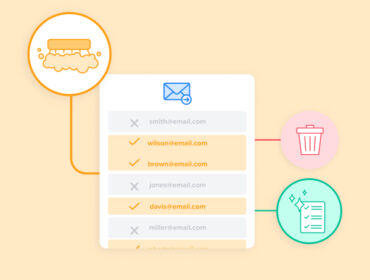5 Data Technology Resolutions for Retail Marketers in 2020
5 Data Technology Resolutions for Retail Marketers in 2020
Retail brands have some work to do in the new year. According to a recent study conducted by WBR Insights, 64% of US retail professionals can only identify half – or less – of their website visitors. And over one-third say they can’t integrate their data technologies. That means they can’t accurately track customers across their buyer journeys or optimize campaigns for engagement and retention.
It’s no surprise, then, that retail professionals have big goals for improving campaign intelligence and data technology.
According to our study, these are the top five priorities retail professionals will invest in for 2020.

1. Adopt deep learning capabilities
Retail brands are hoping to use deep learning technologies, such as artificial intelligence, to enhance marketing strategies. With these technologies, marketers will be able to automate data collection and categorization, and more rapidly and effectively reach customers with personalized campaigns in real time.

2. Find future buyers using unique first-party data
Marketers plan to use non-traditional first-party data sets to identify and engage prospective buyers. These data sets can target customers based on a range of factors, such as interest in specific product features, delivery preferences, and financial standings. For example, one marketing professional in home furnishings is set to target millennials who are interested in new products but want to pay in installments. Another in hardware and electronics offers discounted fittings and furniture assembly for seniors, with plans to expand these personalized features for veterans.

3. Integrate technology solutions
Instead of re-platforming, retail professionals are looking to integrate technology solutions with their existing marketing capabilities. For instance, more than half are still struggling to onboard their offline CRM data for ID management purposes. Once they can do this, they’ll be able to gain critical customer insights and use key strategies like predictive modeling, remarketing, and audience segmentation.

4. Create personalized and interactive features
Retailers will invest in website features that are personalized based on customer behaviors, interests, and affiliations. According to our study, 28% of retail professionals are already using ID management technologies to improve personalization, but 65% are still considering or developing this capability. Those who do invest in personalization are able to offer group discount options and fraud protection (59%), identify their best customers (48%), and improve product recommendations (33%).

5. Use campaign intelligence to drive engagement
With campaign intelligence data and technologies to guide them, retail marketers can build a more thorough view of each customer, incorporating all touchpoints. They can then use these insights to build more effective and engaging campaigns, offering product recommendations, solutions, and even prices that appeal to each individual buyer.
As we head into 2020, retail professionals are tasked with grabbing attention in a world where it’s in short supply. By sticking to these resolutions, they can prime their marketing systems to yield more comprehensive data and build more inclusive and interactive campaigns for customers across platforms.
Want a deeper dive into the data technologies and identity-driven strategies that are helping retailers better understand who their customers truly are and act upon those insights? Download our Campaign Intelligence Report.



